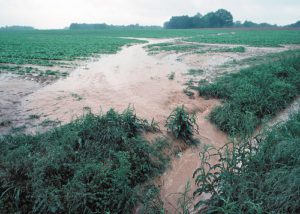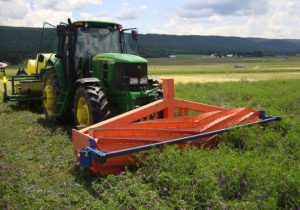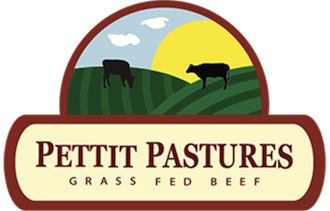Reducing Mechanical Tillage
The invention of the plow was a key development in human history. It allowed the mass cultivation of land to grow food. Nevertheless, in hindsight, it was a case of overstepping nature’s guidelines.
In all but the most brittle environments, nature covers untilled soil with a living green boimass, that acts like a sponge. Rain and dew are captured and held in porous, carbon-rich topsoil that conserves both the moisture and the nutrients needed for the plants most adapted to that environment.
Pre-machinery, most tillage was near the soil surface. But since the introduction of the engine-powered plow, tilling has intentionally turned soil layers upside down.
Topsoil and organic surface debris end up near the bottom. However, the newly exposed soil on the surface can dry out quickly and be made tidy because it lacks decomposing organic matter.
While that smooth “clean” soil makes the mechanical planting of crops easy, it lacks the mineral-rich nutrients needed for robust plant growth. Consequently, chemical fertilizers are needed to make up for the lost fertility.
Making matters worse, the rich top soil sponge that has higher levels of organic matter and soil aggregates that create space to absorb rain water have been destroyed by the over use of the mechanical tillage. This means when it rains ever increasing amounts of water run off the fields into our groundwater, streams, lakes and rivers taking soil and chemical fertilizers with it. To make up for that loss, excessive quantities of fertilizers are needed.

Beyond that, the surface organic material that is plowed under cuts off the capillary action that allows moisture from damp soil below to rise up to the plant root zone. Dry, rain-dependent, leached soil is the result.
Edward Faulkner, in his 1943 book “Plowman’s Folly”, recognized all this. His book points out the folly of plowing under living topsoil, and he accurately describes the cascade of negatives that follow.
The need for mechanical tillage can be greatly reduced by incorporating the use of No-till planting methods and incorporating cover crops before and or after cash crops are in the fields. Decaying plant material from the cover crops provides organic nutrients and helps to hold moisture right where it’s needed – in the plant root zone.
Furthermore, as the plants grow, upper soil bacteria are gradually able to access atmospheric nitrogen, rather than needing to have it supplied as a chemical fertilizer. Cover crops can then be terminated by grazing them with livestock or by physically rolling them dow, both of which eliminate or vastly reduced the need for herbicides.
Faulkner was convinced that within a few years, the moldboard plow would be made obsolete by new equipment that allowed mechanical planting of crops without the need for smooth dry soil, free of organic debris.
He would be sad to see that the plows of his time have been replaced with massive machines that annually tear up multi-thousand acre fields for corn and soy.
Fortunately, the valuable combination of cover crops and style use of livestock is now being rediscovered by farmers. With any luck, the folly of deep plowing will become widely recognized around the world. That change would allow farmer to improve their soils and thus by less dependent on chemical applications for their crops.


